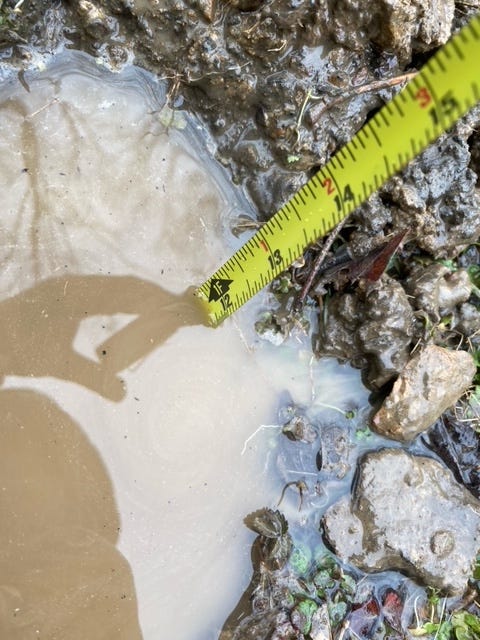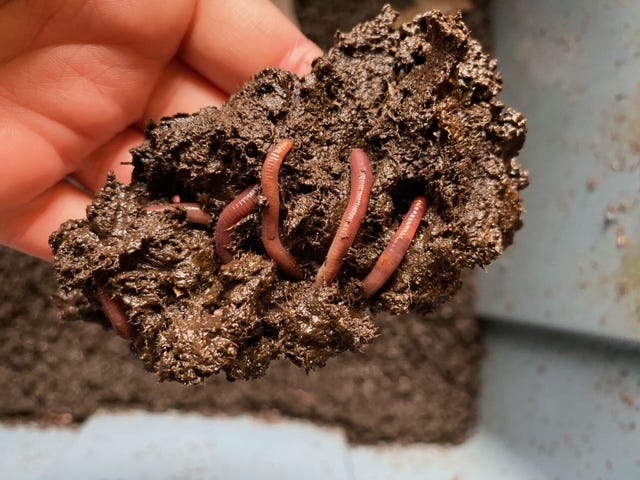Draw your own permaculture site part 2: Soil
Soil is only one letter away from soul and it’s what supports the life on your site.
I don’t remember exactly where I heard this, but someone had explained that dirt is dead and soil is alive. Some sites might have a lot of dirt or rocks, or other native geology that may not support the goals for the site. Fortunately, you can always build soil.
You don’t have to get dirty
When starting a permaculture site design, get a baseline for your soils. The United States Department of Agriculture hosts the Web Soil Survey (WSS). The WSS is a powerful free tool that allows you to review soil structures across any property in the country. Not only that, but the dozens of layers of data you can apply help to identify whether sites are favorable for roadways, construction, timberland, and more—and you can even apply layers that tell you what may seem like obscure details, like how ideal the property is for helicopter landings. Aside from analyzing your own site or neighboring properties, you can lean on WSS if you’re scouting potential sites too. Using WSS means you never have to set foot on the site or get your hands dirty to learn about the soil.
If you’re based in another country, like some of my subscribers, check out the Soil Atlas of Europe or search for soil surveys in your country.
Observe your site to get a sense for soils
Concentrations of certain plants can tell you about the soil, which means you don’t need to do a soil test to get an initial impression for soil quality. For example, pine trees like acidic and loose soil (some varieties of pine prefer wet areas). If you have clusters of pine on your site, you could infer that those spaces have a lower pH. According to the University of New Hampshire’s extension office, pine trees don’t create acidic soil, so you can take their presence as a sign of the soil’s inherent properties. (Hint: Blueberries like acidic soil, so planting them near pine trees might be ideal if pines are telling your soil story.)
Aside from trees, you can rely on weeds to help tell the soil story. The OLD FARMERS’ ALMANAC has a resource that explains soil markers from common weeds.
Using tree and plant species to analyze soil only provides base deductions and shouldn’t be used as a source of truth for overall soil quality. Soil lab tests are the most accurate way to determine your soil’s state and needs.
If you want to get dirty
Lab soil testing and home soil kits help give a clear profile of your soil. Some municipalities and agricultural extension offices offer free-to-low-cost public soil testing, which requires you to select samples from various parts of your site and mail them or drop them off for testing. Lab tests like this help give you a detailed view of your soil content, and also help feed soil databases. Private soil testing services might have a greater range of analyses and soil amendment support. At-home soil test kits from big box stores allow you to have real-time feedback without the need to wait for labs and, for folks with privacy concerns about sharing information, these tests allow you to keep the results to yourself.
Most soil tests are affordable and fast, which means you can learn the specific needs of your soil without wasting money and time on amendments that may not be necessary. Aside from learning the Nitrogen, Phosphorus, Potassium and other nutrient content of your soil, the lab tests will also identify sand, clay, and loam ratios. You can get a fairly decent perspective on these ratios by collecting a soil sample, adding it to a glass jar, adding water, then shake it up. Let it sit for 24 hours and then measure the heights of the sediment layers. Sand will settle at the bottom, then silt, and clay will be closer to the surface. I wasn’t expecting to find this test helpful, but it did help identify how different soil structures are around our site. I was also surprised by the LIFE in the soil. When checking the jar I noticed small protozoa and other life forms swimming and going wild. Seeing the life motivated me to do more.
You can facilitate your own perc test
A perc test, short for percolation test, measures how quickly your soil drains. Perc tests commonly come up in septic site identification, but doing your own perc test can help you identify areas that may not serve well for certain plantings, livestock, construction, or other needs. Perc tests are best done when there’s no rain in the forecast. For a DIY perc test, dig a small hole about 12” deep and 12” wide and fill it with water. If it drains immediately, keep filling with water to make sure the soil is fully saturated. Let it sit for 12 hours. Fill it with water again and measure the water depth, then measure the depth after one hour. (Alternatively, you could measure every 30 minutes.) If you only measure over the course of an hour and your initial depth was 12” and an hour later it’s 8”, then you dropped 4” per hour, which means you have a perc rate of 15 minutes per inch. However, measuring at shorter intervals helps to tell the story. If your initial depth was 12” and 30 minutes later it’s 8”, then your perc rate is 7.5 minutes per inch. If it remains at 8” a few hours later, then the drainage rate is fairly poor. Closer observation can help understand drainage rates.
Building soil
A great tool for building soil, no matter the type of soil you find on your site, is compost. To me, compost is the holy basil of the soil web. Holy basil helps calm you when you’re anxious and give you more energy when you’re tired. Compost helps prevent evaporation when you need to keep soil moist, and it helps catch and hold extra water before the water hits wet soils. Compost inputs inherently layer on and build soil structure without disturbing the existing layers and life.
As you develop your permaculture site design, add a few designs with maps of soil content. Identify which amendments you would target to manage your existing site needs.
Permaculture design series and Q&A
Let me know if you have questions about soil testing. The September 19 live Q&A Zoom session at 7 p.m. ET is for paid subscribers only. Zoom invite included in the next section.
Tomorrow’s post is all about weather and climate.







